FREE Standard Shipping On All Orders $100 or More!*
Hayward Pool Filter Multiport Repairs

When Hayward multiport valves start to age different problems can arise, some are just annoying and some are actually detrimental to the filter system working properly. And in other instances I've seen multiport problems occur from an incorrect valve installation on a sand or DE pool filter.
The most common problem when installing a new multiport is over-tightening the threaded fittings going into the valve. If you are putting a wrench or channel locks on the fitting your chance of putting to much torque on it is a good possibility. One turn too many and you will create a crack in the valve body where the threaded fitting connects to the valve. Read the label on the valve, it will usually advise hand tight, plus 1-1/4 turns.
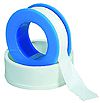
Also another mistake that causes issues with the threads is putting on any type of cement or PVC glue. The fitting should be wrapped 3-4 times with Teflon tape and that is enough. Wrap the Teflon tape around the fitting in a clockwise direction, so that it stays put as you thread in the fitting. If you want some extra thread sealant, smear on some gasket sealer before the Teflon tape is used. Tighten the fitting in by hand and then use large Channel type pliers and give it another full turn and that's enough.
Common Hayward Multiport Valve Repairs
Leaking Multiport Valves: If the valve is leaking around the outside of the top its usually the cover o-ring that's right under the cover. When water is leaking out the backwash port its usually the spider gasket also, you can get by temporarily by putting a 1.5" winterizing plug with o-ring and that will stop the leak but this is just until you can replace the gasket. If the stem through the center is leaking there are some parts to change on the valve stem. There is 2 o-rings and washers and on top of the valve under the handle is a plastic bearing (spacer ring) that helps the valve handle move easier.
Broken Valve Handle: A broken handle can happen from falling tree branches, or just too much force put on it while turning. Remove the 6 bolts and nuts that holds the multiport top on. Then remove the complete assembly. Set the bottom of the assembly on a hard surface and you can push down on the top with your stocking feet and the center rod in the assembly will raise up, once that occurs you can knock out the pin that holds the handle on and replace the handle and put the pin in that holds it in place.
Valve Handle Hard to Turn: If the Handle is hard to turn there could be grit or dirt in the valve or the spider gasket needs to be cleaned or the stem shaft needs to be lubricated. Shut off the pump and push down on valve handle for a few seconds to allow water to flow over the spider gasket. A spray Teflon lubricant can be sprayed around the handle, but do not use WD-40 or any oil based lube.
Floppy Valve Handle: If the valve is floppy with no resistance its usually a broken spring, located between the lid and the rotor. Chemical corrosion can weaken the stainless steel spring, and cause it to rust and break. The replacement of a spring is similar to replacing the valve handle, described above.
Spider Gasket Replacement: Every 5-10 years, the gasket on a multiport valve may need to be replaced. First, make sure that you order the correct spider gasket, there are literally dozens of different sizes. Find your correct spider gasket on the Filter Valve parts page that matches your multiport valve make and model number. To change the spider gasket, remove the key assembly by removing the screws around the lid and lifting on the handle (you may need to pry the lid up slightly).
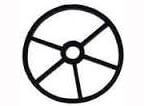
The old one spider gasket is probably glued in place, so dig it out with a small screwdriver, to clean the groove out completely. After all the rubber bits are removed, place dabs of superglue or silicone (or Hayward gasket adhesive), into the grooves of the valve body. Then place the new gasket into the grooves and replace the key assembly in the correct position, with the cover o-ring in place.
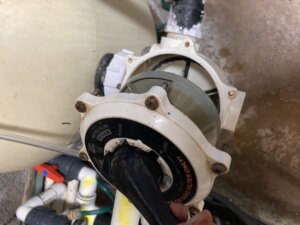
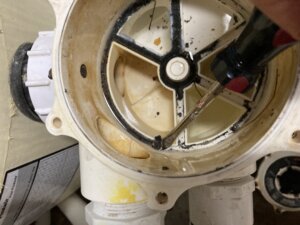
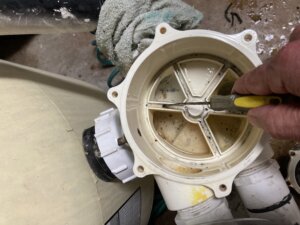
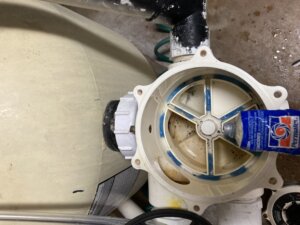
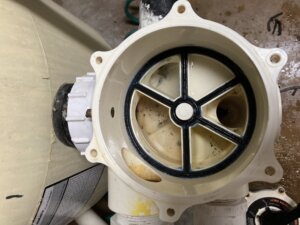
An easy way to fix issues with handle, lid or rotor is to replace the Key Assembly - everything that comes out when you remove the 6 or 8 screws around the valve lid, and lift up the handle. A Key Assembly is all assembled, just drop it into place. it is a quick simple fix. Especially for valves that have the spider gasket molded onto the rotor, replacing the Key Assy is the way to go.
You can find the key assembly by finding your Filter Valve parts schematic on our website.
Replacing a Multiport Valve: If your valve has quite a few problems, or major problems such as valve body cracks, you can replace the valve. Remember to order a replacement multiport valve by filter make and model, and keep in mind that multiport valves for sand filters are different than DE filter multiport valves. Side mount valves and top mount valves are also different sizes, and one cannot be substituted for another. To find your correct multiport valve, visit our Backwash Valves page at ITS, or give us a call if you need assistance.
After finding a correct replacement multiport valve, you will cut the pipes coming in and out of the valve, and after connecting the new valve to the filter, you can use couplings or unions to reconnect the pipes, and also reconnect the backwash line.
However, most multiport valve problems do not require a complete multiport valve replacement - there are quite a few simple fixes that you can do, all of which you do not need to be a professional pool guy to handle.